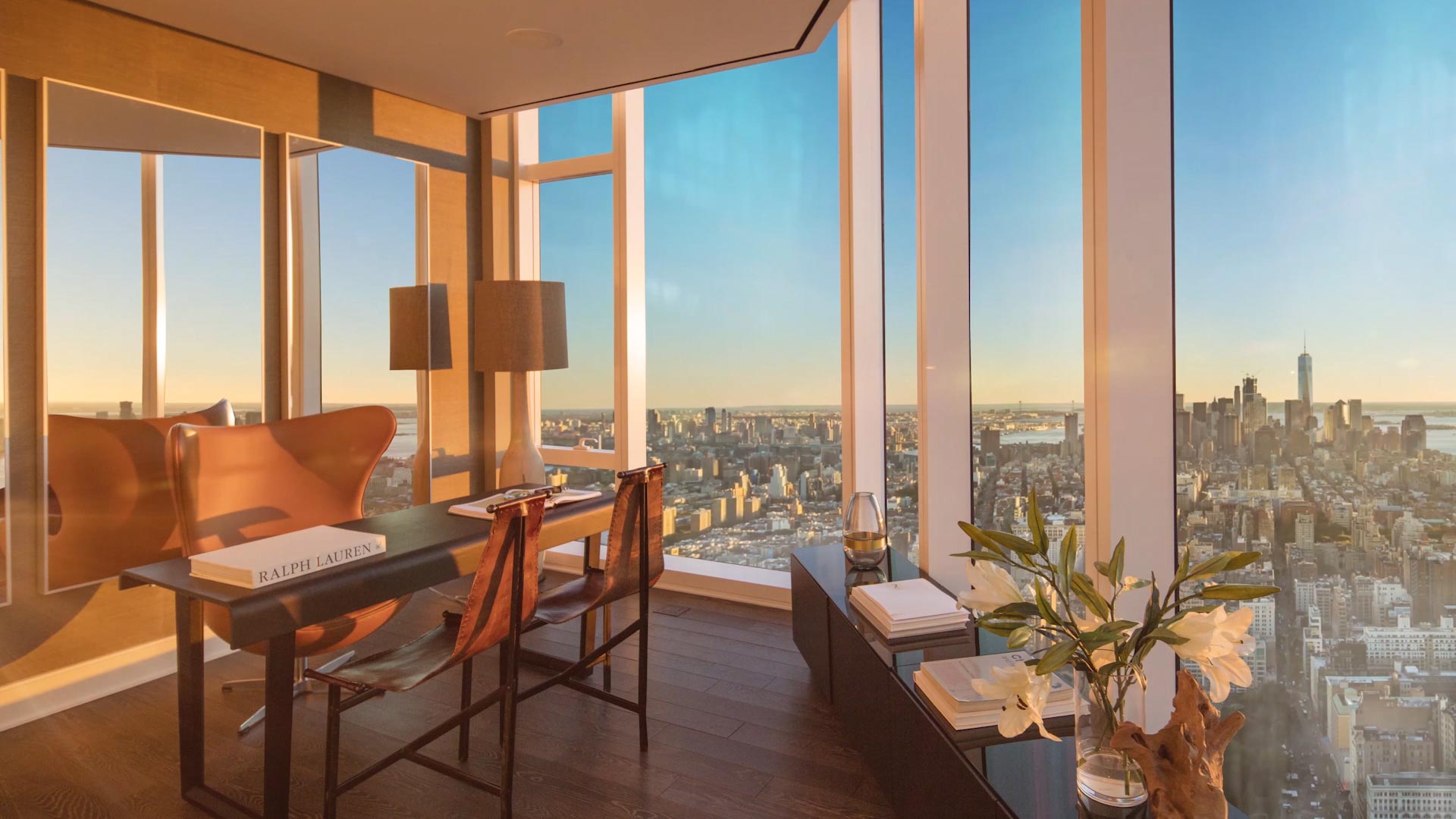Four Design Trends That Will Dominate Luxury Real Estate in 2022
By: Ameena Walker
The home continued to be the center of life in 2021, and design trends have kept up accordingly. Gone are the staid white walls of yore. As of last year, many homeowners across the country started to have fun with home decor again, putting the reigning trend of interior minimalism on the back burner as preferences for standout accents like bold wallpaper prints and black kitchens emerged. But within the world of luxury condominiums, designers and developers moved away from glitzy, over-the-top finishes and opted for a more understated take on luxury to create homes that were calming and subdued.
As we continue to await a post-pandemic era, industry insiders say design trends within the luxury market will continue to emphasize home spaces that are serene and inclusive of nature, and are also flexible enough to accommodate these uncertain times. As we embrace 2022, we asked industry professionals to weigh in on the materials and design trends that will dominate the luxury condominium market for the year to come.
Connection to the Outdoors
Materials that invoke elements of the outside world—like stone and wood—will continue to anchor the design of many luxury condominium developments. “Local and natural materials help establish a sense of place and offer a subtle visual connection with the surrounding wildlife,” says WELL- and LEED-accredited interior designer Sarah Barnard, who is based in Los Angeles. “White oak is both retro and entirely relevant. Homes built in the 1980s were partial to oak, and many people are fond of it now. While exotic wood veneers had their time in vogue, simple, solid-wood furnishings and cabinetry once again are in focus.”
 Photo Credit: Binyan Studios
Photo Credit: Binyan Studios
In projects like Jolie on Greenwich, the LEED-certified luxury condominium building in Manhattan’s Financial District, Deborah Berke Partners created interiors that embrace the building’s abundant natural light, employing simple palettes that feature ash millwork, stone countertops, and oak floors. “The generous natural light and stunning views at Jolie provide a connection to the outdoors that everyone craves. I think that connection will always be important,” says Stephen Brockman, partner at Deborah Berke Partners.
Focus on Sustainability
Sustainability will remain a major focal point in new luxury developments. As the climate crisis continues, a growing eco-conscious luxury clientele base has called for developers and designers to prioritize the use of sustainable materials. Newer luxury developments like 98 Front Street in Dumbo, Brooklyn, and Charlotte of the Upper West Side in Manhattan continue to strive for environmental efficiency through measures like LEED certification and Passive House standards.
At Jolie on Greenwich, energy-efficient features include variable refrigerant flow heating and cooling technology, which is twice as efficient as other systems; air filtration systems with high MERV ratings (MERV stands for Minimum Efficiency Reporting Values) that reduce air pollution in residential settings; and special filtration and lights that help reduce germ spread in common spaces.
Sourcing materials from nearby also makes buildings more sustainable: Building materials and the construction industry account for 11 percent of annual global CO2 emissions. Locally sourced stone and wood help offset the waste and pollution resulting from the use of more traditional materials like concrete and steel.
Wellness-Focused Finishes
In light of the pandemic, luxury condominium developers and designers will continue to experiment with various types of hard surfaces, and even textiles, that are easy to clean and disinfect. “More designers are looking into materials that don’t harbor bacteria and are generally nontoxic in nature,” says architect and textiles designer Korantemaa Larbi. “Indoor air quality and lighting have also become even bigger factors due to the pandemic, since natural lighting helps to reduce the growth of pathogens and bacteria, as does good ventilation and filtration systems.”
Home Offices
Over the past two years, designated home workspaces made it easier to navigate the quick shift from company office to remote work. With the future of work undoubtedly changed, home office spaces are almost essential for any new development. “Before, it was a luxury to have an office space in your home,” says Anna Rosemann Bastin, founder of Los Angeles-based interior design studio AR Interiors. “Now it is a necessity when building new homes.”
Dedicated spaces for working, studying, hosting virtual meetings, and the like will remain in high demand for another year, at minimum, according to Barnard. The need for adaptive spaces that support both a productive work environment and a relaxing home life is likely something that will stick around long after the pandemic is over. “Private home offices are often critical in modern life,” says Barnard. “By allocating dedicated space for working and studying, we help to ensure that virtual meetings are confidential and individual focus is preserved.”











